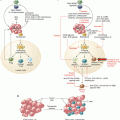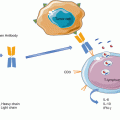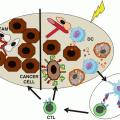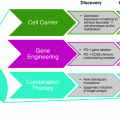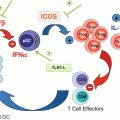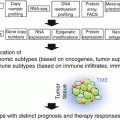Advanced melanoma
Outcome
Publication (Ref)
gp100 vs ipilimumab vs ipilimumab + gp100
Ipilimumab 3 mg/kg approved
OS benefit
Hodi et al. [18]
DTIC vs DTIC + ipilimumab
Ipilimumab 10 mg not approved
Robert et al. [19]
Ipilimumab 3 mg vs ipilimumab 10 mg
Ipilimumab 10 mg OS benefit
Ascierto et al. [20]
DTIC vs nivolumab
Nivolumab approved OS benefit
Robert et al. [21]
Ipilimumab vs pembrolizumab
Pembrolizumab approved OS benefit
Robert et al. [22]
Ipilimumab vs ipilimumab + nivolumab
Ipilimumab + nivolumab approved
Hodi et al. [23]
Ipilimumab vs nivolumab vs ipilimumab + nivolumab
Ipilimumab + nivolumab approved
PFS benefit in PD-L1 negative tumors
Larkin et al. [24]
Pembrolizumab vs pembrolizumab + epcadostat
Ongoing
Adjuvant therapy
Interferon alfa-2b (IFN)
High-dose IFN approved
RFS and OS benefit
Kirkwood et al. [2]
Pegylated interferon alfa-2b
Pegylated IFN approved
RFS benefit
Ipilimumab 10 mg vs placebo
Ipilimumab 10 mg/kg approved
RFS, DMFS, and OS benefit
Ipilimumab 10 mg vs 3 mg vs HD-IFN
Ongoing
Pembrolizumab vs placebo
Ongoing
Ipilimumab vs nivolumab
Ongoing
34.2 Anti-CTLA4
34.2.1 Results in Advanced Melanoma Patients
Monoclonal antibody blocking of cytotoxic T lymphocyte antigen-4 (CTLA4) leads to breaking immune tolerance and can induce tumor regressions. The fully humanized monoclonal anti-CTLA4 antibody ipilimumab was approved in 2011 in the USA in first and second line for patients with advanced melanoma and in second line in Europe at a dose of 3 mg/kg based on randomized controlled trial (RCT) results that showed that the drug either alone or combined with a peptide vaccination provided a significant survival benefit of about 33% compared to vaccination alone [18]. In first-line ipilimumab at 10 mg/kg combined with dacarbazine provided only a small, albeit statistically significant, benefit, and there seems no reason to advocate the use of the combination [19]. This was confirmed by long-term follow-up data demonstrating a plateau ≥5-year survival rate for the combination of dacarbazine and ipilimumab to be around 20% just like what is observed in large data sets with ipilimumab alone in thousands of patients [29, 30]. Of note, also long-term survival with tremelimumab monotherapy was reported to be 20% [31]. Also the efficacy in patients with brain metastases has been established and reported [32]. Since responses can occur after initial tumor progression or appearance of new lesions, immune-related response criteria (irRC) have been developed to avoid premature treatment cessation [33, 34].
At 3 mg/kg adverse events (AE) occur in 40% of patients and are mostly immune-related (irAE), such as skin rashes, colitis, hepatitis, and hypophysitis. Grades 3–4 adverse events occur in about 20% of patients and can, in rare cases, be fatal. Usually they resolve spontaneously or after steroid therapy, except endocrine failure that usually requires permanent hormonal substitution. High-dose steroids are indicated for severe irAEs, but other immunosuppressive agents, like anti-TNF-alpha antibodies, may also be needed [35].
Regarding dose efficacy for ipilimumab, a randomized phase II trial comparing 0.3, 3, and 10 mg/kg suggested 10 mg/kg to be the more effective dose, but associated with more toxicity [36]. In 2016 the results of the randomized phase III trial have clearly demonstrated that the 10 mg/kg dose is more efficacious in patients with advanced melanoma than the 3 mg/kg dose [20]. A significant overall survival benefit was demonstrated (HR, 0.84; p < 0.04) with an absolute difference in survival at 3 years of 8% (31% vs 23%). These results come at a price. The 10 mg/kg dose is associated with significantly higher toxicity (grade 3–5 events in 34% vs 19% and irAEs grade 3–5 in 30% vs 14%). The value of four 3 weekly administrations (induction) compared to induction followed by further administrations (maintenance) has not been established.
34.2.2 Biomarker
Good biomarkers for response to ipilimumab therapy still remain to be established. Immune-related adverse events, an increase in lymphocyte counts, an increase in eosinophil counts, the presence of NY-ESO-1 antigen, and the resistance in vitro to T-regulatory cell functions seem to be associated with higher response rates [37–40]. Recently the high levels of soluble CD25 in the serum, especially in the combination with high levels of LDH, were demonstrated to be a very strong prognostic factor for poor outcome [41]. By and large we have only prognostic biomarkers and not clinically important predictive biomarkers.
34.2.3 Adjuvant Therapy in Melanoma and the Recent Approval of Ipilimumab
Approved drugs for adjuvant therapy for stage III melanoma are interferon alfa-2b (USA and EU), based on trial ECOG 1684 [2], and pegylated interferon alfa-2b (USA), based on trial EORTC 18991 [25, 26]. In meta-analyses of adjuvant interferon trials, no dose-effect or duration of treatment effect could be demonstrated, and only a marginal impact on survival of about 3% was observed. Therefore adjuvant therapy with interferon is not widely accepted or used as standard of care [1].
34.2.3.1 Prolonged Relapse Free and Overall Survival with Ipilimumab
In the EORTC 18071 trial, 951 stage III melanoma patients, after full regional lymph node dissection, were randomized to receive either an intravenous infusion of ipilimumab 10 mg/kg or placebo every 3 weeks for four doses (induction), then every 3 months for up to 3 years (maintenance), or until disease recurrence or unacceptable toxicity. Primary end point was RFS. A significant improvement of RFS by adjuvant ipilimumab (hazard ratio 0.75, p = 0.0013) was already reported in 2015 and led to FDA approval. Now in 2016, at a median follow-up of 5.3 years, ipilimumab compared with placebo significantly improved overall survival (hazard ratio for death, 0.72; 95.1% CI, 0.58–0.88; P = 0.001) and distant metastasis-free survival (hazard ratio for death or distant metastasis, 0.76; 95.8% CI, 0.64–0.92; P = 0.002). Five-year OS rates were 65.4% in the ipilimumab arm and 54.4% in the placebo arm. The 5-year DMFS rates were 48.3% in the ipilimumab arm and 38.9% in the placebo arm. The recurrence-free survival benefit observed previously was maintained (hazard ratio for death or recurrence, 0.76; 95% CI, 0.64–0.89; P < 0.001). Treatment benefits were by and large consistent across subgroups with stage IIIC seeming to derive more benefit than stage IIIB and more than stage IIIA, which was the only subgroup that did not seem to benefit (HR 0.98) [27, 28].
34.2.4 Highest Benefit in Ulcerated Melanoma
Post hoc analyses demonstrated a significant impact both in patients with sentinel node-positive disease and palpable node-positive disease. Like in EORTC adjuvant trials 18,952 and 18,991 with IFN and pegylated IFN, patients with sentinel-positive disease derived a greater benefit [25, 26, 42–44]. Patients with an ulcerated primary tumor derived the greatest benefit like in the meta-analysis of the IFN trials 18,952 and 18,991, indicating that ulcerated melanoma is a separate biologic entity [33, 34]. In contrast however to the experience in the adjuvant IFN trials EORTC 18,952 and 18,991, also patients with non-ulcerated melanomas derived a benefit in the adjuvant ipilimumab setting [27, 28]. This is in contrast to the total lack of benefit in IFN trials, which has recently also been confirmed in the IPD meta-analysis of all adjuvant IFN vs observation trials [45].
34.2.4.1 Toxicity and Quality of Life
Global health quality of life scores in the adjuvant ipilimumab trial EORTC 18071 was not significantly different between treatment arms [46]. This is somewhat surprising in the light of significant adverse event rates that resulted in only 42% of patients to receive more than four doses of ipilimumab and only 28.9% of patients to go beyond 1 year of treatment [27]. Grade 3–4 immune-related adverse events (irAEs) occurred in 41.6% of ipilimumab and in 2.7% of placebo-treated patients. The most important grade 3–4 irAEs were diarrhea/colitis in 17.2%, hepatitis in 15.2% and endocrinopathies in 7.8% with hypophysitis in 4.4%, and neurologic events in 1.1%. Five patients died because of drug-related causes, three with colitis, one with myocarditis, and one with a Guillain-Barre syndrome leading eventually to multiple organ failure. The great majority of grade 3–4 irAEs occurred during the induction phase. Median time to resolution after stopping ipilimumab and corticosteroid medication was 6 weeks, except for endocrinopathies (31 weeks). In conclusion, one can state that adjuvant ipilimumab therapy provides consistent improvements in terms of RFS, DMFS, and OS, but that it comes at a price in terms of irAEs that needs expertise and experience to be recognized early and handled with established treatment algorithms. This treatment should be handled by centers with sufficient experience.
Moreover, the trial does not provide evidence that maintenance therapy beyond the four administrations of the induction phase is indicated. The absence of a significant impact in stage IIIA patients, which have a relatively low risk of recurrence, questions the use of ipilimumab at this dose and with this associated toxicity [47, 48].
34.3 Combination Therapies with Ipilimumab
Various combinations of ipilimumab with other immune modulating, antiangiogenic or chemotherapeutic, or targeted agents have been reported or are ongoing. Guiding principles for combination treatment designs could be to use drugs that lead to immunogenic cell death [49–51]. Since radiotherapy can also induce immunogenic cell death, the reported observations of abscopal antitumor effects after radiotherapy and ipilimumab have led to a number of clinical studies to further investigate this phenomenon [52, 53].
34.4 Chemotherapy
Three studies regarding the combination of chemotherapy with ipilimumab in melanoma patients have been published thus far:
- 1.
Dacarbazine (DTIC): A phase III trial comparing DTIC versus DTIC plus ipilimumab at 10 mg/kg in first line in patients with advanced melanoma showed a survival benefit for the patients treated with the combination [19, 29]. The median benefit of only 2.1 months was however disappointing, and the combination is not believed to bring a benefit over ipilimumab alone. Long-term survival in the dacarbazine plus ipilimumab arm was 20% indicating that the combination is not any better than ipilimumab alone, and the combination of this non-immunogenic chemotherapy with ipilimumab is not used in clinical practice [1, 29].
- 2.
Fotemustine: In an open-label, single-arm phase II trial, 86 patients with advanced melanoma, 20 of them with asymptomatic brain metastases, received induction treatment of 10 mg/kg intravenous ipilimumab every 3 weeks to a total of four doses, and 100 mg/m2 intravenous fotemustine, a cytostatic nitrosuree weekly for 3 weeks, and then every 3 weeks from week 9 to 24 [54, 55]. Patients with a confirmed clinical response were eligible for maintenance treatment from week 24, with ipilimumab every 12 weeks and fotemustine every 3 weeks. Forty patients (46.5%) in the study population achieved disease control, as did ten patients with brain metastases (50%). Toxicity was considerable with 47 patients (55%) having grade 3 or 4 treatment-related adverse events. This combination therapy is rarely used because of the arrival of anti-PD1.
- 3.
Carboplatin/Taxol: Preliminary results of a randomized phase II trial comparing concurrent carboplatin plus paclitaxel and ipilimumab (4 doses at 3 mg/kg) with sequential treatment of these agents have been reported [56]. Patients with cutaneous melanoma (n = 24), mucosal melanoma [2], ocular melanoma [3], and unknown primary melanoma [1] had entered the study. Response rates (RR) and disease control rates (DCR) for 14 evaluable patients at 24 weeks were 35.7 and 64.3% by irRC, respectively, with grade 3–4 AEs in 63% of patients. No further reports on this study have been published. Overall chemo-immunotherapy combinations have been abandoned in melanoma because of the efficacy of anti-PD1 monotherapy and the efficacy of the combination therapy with anti-CTLA4 and anti-PD1.
34.5 Antiangiogenic Agents
Bevacizumab
In a phase II study, 46 patients with metastatic melanoma were treated in four dosing cohorts of ipilimumab (3 or 10 mg/kg) with four doses at 3-week intervals and then every 12 weeks and bevacizumab, an anti-VEGF monoclonal antibody (7.5 or 15 mg/kg), every 3 weeks [57]. Best overall response included eight partial responses, 22 instances of stable disease, and a disease control rate of 67.4%. Median survival was 25.1 months. irAEs included giant cell arteritis (n = 1), hepatitis (n = 2), and uveitis (n = 2). Extensive CD8(+) and macrophage cell infiltration were observed in on-treatment tumor biopsies. From this initial experience, it appears that the combination of bevacizumab and ipilimumab can be safely administered, and it indicates that VEGF-A blockade influences inflammation, lymphocyte trafficking, and immune regulation that should be explored and understood further.
34.6 Cytokines (IL2, IFN-Alpha, GM-CSF)
Interleukin-2 (IL-2)
The most mature data on the combination of IL-2 and ipilimumab are on a 36 patients cohort treated at the NCI Surgery Branch [58]. There were six complete responders (17%) which were higher than the 6% CR rate in 56 patients treated with ipilimumab alone and the 7% CR rate among 85 patients who received ipilimumab by an intra-patient dose-escalation schedule in combination with gp100 peptide vaccination. All CRs except one were ongoing at 54+ to 99+ months at the time of the report. The combination with IL-2 did not seem to increase toxicity and should be explored further.
Interferon-Alpha (IFN)
The first phase II trial regards the combination of high dose IFN (HDI) with the anti-CTLA4 drug tremelimumab [59]. In this study 37 stage IV melanoma patients were enrolled to receive tremelimumab 15 mg/kg/course (three cycles [one cycle = 4 weeks]) intravenously every 12 weeks with the concurrent administration of HDI. From course 2 onward, HDI maintenance was administered subcutaneously. Response data in 35 evaluable patients: overall response rate is 24% (4 CRs and 5 PRs). Fourteen patients (38%) had stable disease with a median progression-free survival of 6.4 months and median overall survival was 21 months. These results suggest additive antitumor activity of this combination.
The second phase II trial regards the combination of pegylated IFN and ipilimumab [60]. In this study in 31 patients, ipilimumab was administered at 3 mg/kg for four doses along with concurrent peginterferon alfa-2b at 1–3 mcg/kg weekly for up to 156 weeks. Among 27 evaluable patients, there were 4 CRs, 8 PRs, 4 SDs, and 13 PDs. Peginterferon alfa-2b added to ipilimumab resulted in a response rate of 40% and was associated with a grade 3 toxicities rate of 45%. With the arrival of anti-PD1, this combination will probably be replaced by exploring additive effects with anti-PD1.
GM-CSF
The observation that CTLA-4 blockade and granulocyte-macrophage colony-stimulating factor (GM-CSF)-secreting tumor vaccine combinations demonstrate therapeutic synergy in some preclinical models evoked the question whether systemic GM-CSF (sargramostim) enhances CTLA-4 blockade. This question was addressed in a randomized phase II trial, conducted by ECOG in 245 patients with unresectable stage III or stage IV melanoma, comparing ipilimumab plus sargramostim treatment with ipilimumab alone [61]. Patients were randomized to receive ipilimumab at 10 mg/kg, intravenously on day 1 plus sargramostim, 250 μg subcutaneously, on days 1–14 of a 21-day cycle vs ipilimumab alone. Ipilimumab treatment included induction for 4 cycles followed by maintenance every fourth cycle. The primary end point of the study was overall survival, with secondary end points progression-free survival, safety, and tolerability. At a rather short median follow-up of 13.3 months, overall survival was superior for the combination treatment (17.5 months versus 12.7 months), and the 1-year survival rates were 68.9% versus 52.9%. Surprisingly no differences for PFS were observed (median PFS of 3.1 months for both treatment arms). Strikingly, and poorly understood, was the observation that the combination treatment was associated with less toxicity. Clearly further studies need to be conducted to elucidate these observations. Which can be said about all cytokines mentioned in this section and various trials are on the way [62].
34.7 Vaccines
gp100 Vaccines
Theoretically a combination of a vaccine with anti-CTLA4 is very attractive [63]. Yet the results from the randomized phase III trial comparing ipilimumab versus ipilimumab plus gp100 vaccine versus gp100 vaccination alone did not show a benefit for the combination of ipilimumab plus the vaccine compared to ipilimumab alone [18]. A similar observation was made in the publication of the mature results of the NCI Surgery Branch experience [58].
Talimogene Laherparepvec (T-VEC)
Talimogene laherparepvec (T-VEC) is a herpes simplex virus type 1-derived oncolytic immunotherapy designed to selectively replicate within tumors and produce granulocyte macrophage colony-stimulating factor (GM-CSF) to enhance systemic antitumor immune responses. Intratumoral administration of T-VEC was compared with GM-CSF in patients with unresected stage IIIB to IV melanoma in a randomized phase III trial [63]. The primary end point was durable response rate (DRR; objective response lasting continuously ≥6 months), with overall survival (OS) as one of the secondary end points. Among 436 patients randomly assigned, DRR was significantly higher with T-VEC (16.3) than GM-CSF (2.1%). Overall response rate was also higher in the T-VEC arm (26.4%) versus 5.7%. Median OS was 23.3 months with T-VEC and 18.9 months with GM-CSF (hazard ratio, 0.79; P = 0.051). T-VEC efficacy was most pronounced in patients with stage IIIB, IIIC, or IVM1a disease and in treatment-naïve patients. Treatment was very well tolerated with grade 3–4 events in <2% of patients.
Laherparepvec with Ipilimumab
In a phase Ib trial, T-VEC in combination with ipilimumab has been evaluated [64]. Intratumoral administration of T-VEC in week 1, 4, and thereafter every 2 weeks was combined with intravenous administration of ipilimumab (3 mg/kg) every 3 weeks for four infusions, beginning in week 6. The primary end point was incidence of dose-limiting toxicities. Secondary end points were objective response rate by immune-related response criteria and safety. In 19 evaluable patients, grade 3–4 AEs events were observed. The objective response rate was 50%, with 44% of patients having a durable response, indicating that the combination may be better that either agent alone.
34.8 BRAF and MEK Inhibitors
Combinations of BRAF inhibitors and MEK inhibitors with immune checkpoint inhibitors such as anti-CTLA are theoretically attractive, but have in practice proven to be not so simple to develop.
Vemurafenib
A phase I trial combining vemurafenib and ipilimumab was stopped early, after only 11 patients, because of several cases of grade 3–4 hepatitis [65].
Dabrafenib + Trametenib
A phase I trial with dabrafenib and ipilimumab did not reveal a repeat experience of the phase I vemurafenib plus ipilimumab trial. This phase I study was reported at the 2014 ASCO annual meeting, and no high rate of severe hepatitis cases was reported [66]. An extension cohort study in 30 patients was ongoing. However the combination of dabrafenib plus trametenib with ipilimumab was stopped early, after seven patients, because of severe colitis in three patients. Therefore no extension cohort was planned. Regarding the combination of dabrafenib and trametenib with anti-PD1 experimental data suggests upregulation of PDL-1 expression and potential synergy of this approach [67].
34.9 Anti-PD1 and Anti-PDL1
The PD1 protein is another immune checkpoint expressed in many tumor-infiltrating lymphocytes in response to inflammation. It has two ligands, PD-L1 (B7-H1) and PD-L2 (B7-DC). The engagement of PD1 on the lymphocyte surface by PD-L1 on melanoma cells and PDL1 expressing dendritic cells and other components of the tumor infiltrate delivers inhibitory signals downregulating T-cell function [15]. This neutralization of the executive phase of T cells at the tumor site is very powerful, and avoiding this by the use of anti-PD-1 and anti-PDL-1 antibodies has been remarkably successful, both in terms of response rates (30–45% in melanoma and 20–30% in various other tumor types) and in terms of a very favorable toxicity profile in comparison to anti-CTLA4 antibodies (15–17). Immune-related adverse events (irAEs) are rare and less severe than with anti-CTLA4, especially cumbersome events such as colitis and hypophysitis. In only a few years, phase I trial results launched phase III trials leading to rapid approval of nivolumab and pembrolizumab for advanced melanoma [21, 22, 68–75]. Both pembrolizumab and nivolumab have been reported to induce response rates around 30–45% in advanced melanoma patients, even in patients that previously failed to respond to ipilimumab. Responses tend to be very durable, up to 2–3 years. PDL-1 expression in the tumor is a good biomarker for response to monotherapy with either agent, but even in PDL-1-negative patients, it is more effective than chemotherapy or ipilimumab [76]. Anti-PD1 has been shown in all melanoma patients to be superior to chemotherapy or ipilimumab and to be effective in ipilimumab failures and in patients that have failed targeted therapies. Anti-PD1 is the drug of choice in first line for all metastatic melanoma patients, with the exception of bulky rapidly progressive BRAF-mutant melanoma patients [77]. Now that anti-PD1 is positioned in first line for most melanoma patients, it is an interesting observation that ipilimumab administered after progression on anti-PD1 therapy seems to be more effective than anti-PD1 therapy following ipilimumab failure [78]. The role of combination therapy with anti-PD1 and anti-CTLA4 agents will be discussed later.
Regarding side effects and quality of life outcomes, it is a clear observation from the randomized trials that both nivolumab and pembrolizumab have fewer and less severe side effects and irAEs than ipilimumab and that QoL is superior with these drugs than with various chemotherapies or with ipilimumab [79–83]. In particular lower colities, hepatitis, and hypophysitis rates are associated with anti-PD1 treatment than with ipilimumab. Yet a wide variety of irAEs can be seen at low frequencies. Excellent overview articles deal with diagnosis and treatment of these toxicities [84, 85].
Overall the incredible impact of anti-PD1 and anti-PDL1 monoclonal antibodies lies in its broad transversal impact in oncology with now activity demonstrated against a wide panel of neoplasms other than melanoma, including lung cancer, renal cell cancer, bladder cancer, stomach cancer, head and neck cancer, Merkel cell cancer, Hodgkin lymphoma, and many other to come [86].
34.10 Nivolumab in adjuvant setting for melanoma resected stage IIIB/C-IV
In July 2017 a press release by BMS declared that an interim analysis of the randomized trial Checkmate-238 had demonstrated superiority regarding the primary endpoint (RFS) in this trial. Patient who had received nivolumab (3mg/Kg every 2 weeks) had demonstrated a significant prolongation of RFS compared to the patients who had received ipilimumab (10mg/Kg). [86]
34.11 Anti-PD1 Plus Anti-CTLA4 Combination Therapy
The rational to combine these two checkpoint inhibitors is that they have different mechanisms of action, with anti-CTLA4 mainly acting at the central level in the lymph node compartment by perpetuating and/or restoring the induction and proliferation of activated T cells and with anti-PD1 mainly acting at the peripheral level at the tumor site by preventing the neutralization of cytotoxic T cells by PDL1 expressing tumor cells and PDL2 expressing plasmacytoid dendritic cells in the tumor infiltrate. The first report in 2013 already indicated that the combination is associated with clearly increased response rates up to 50–60%, with an increased CR rate of around 20% and a clear increase in near-complete responses [87].
A randomized phase II trial, nivolumab plus ipilimumab versus ipilimumab (2:1), was conducted, and the results were recently reported in 2016 [23]. One hundred forty-two patients were randomized, assigning 95 patients to nivolumab plus ipilimumab and 47 to ipilimumab alone. At a median follow-up of 24.5 months, the 2-year overall survival was 63.8% for the combination therapy and 53.6 for those assigned to ipilimumab alone. Treatment-related grade 3–4 adverse events were reported in 51 (54%) of 94 patients who received nivolumab plus ipilimumab compared with 9 (20%) of 46 patients who received ipilimumab alone. Serious grade 3–4 treatment-related adverse events were reported in 36% of patients who received nivolumab plus ipilimumab compared with 9% of patients who received ipilimumab alone [23]. A randomized phase III trial in 945 treatment-naïve patients, ipilimumab versus nivolumab versus ipi + nivo (1:1:1), was also launched, and the first results on the PFS end point were reported in 2015 [24]. Median PFS was superior for ipi + nivo (11.5 months) versus nivolumab alone (6.9 months) versus ipilimumab alone (2.9 months) (p < 0.001). PD-L1 expression (≥5%) played a very important role in this trial in the sense that in patients with tumors positive for PD-L1, the median PFS was the same (14 months) for patients treated with nivolumab alone or with the combination. But in patients with PD-L1-negative tumors, PFS was longer for ipi + nivo (11.2 months) vs nivolumab alone (5.3 months). Combination therapy was the most toxic with grade 3 or 4 occurred in 55% versus 16.3% for nivolumab versus 27.3% for ipilimumab. Overall results are expected to be reported in 2017. It seems highly unlikely that the combination ipi + nivo will be superior to nivolumab alone in patients with PD-L1 positive tumors. It is not excluded that in patients with PD-L1-negative tumors, the combination will outperform nivolumab monotherapy.
Stay updated, free articles. Join our Telegram channel

Full access? Get Clinical Tree


